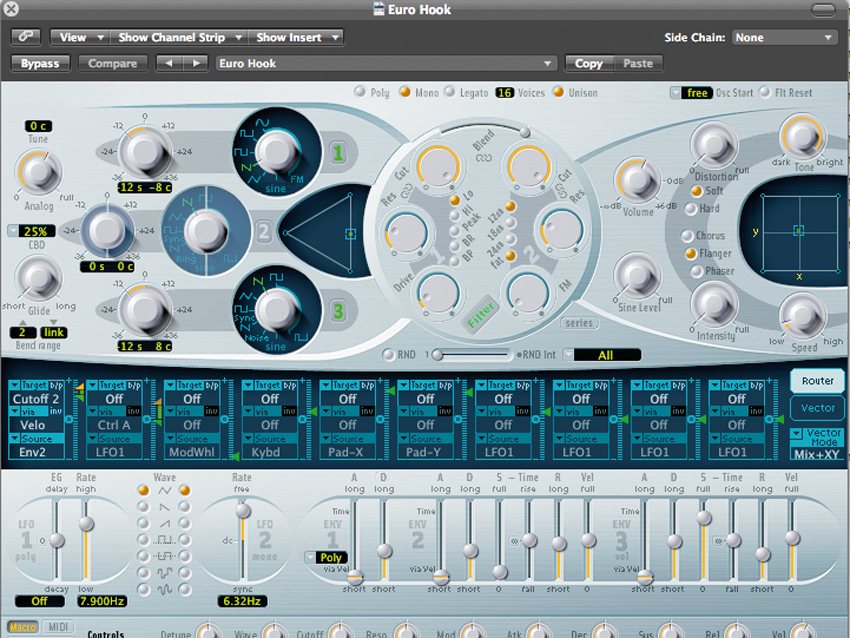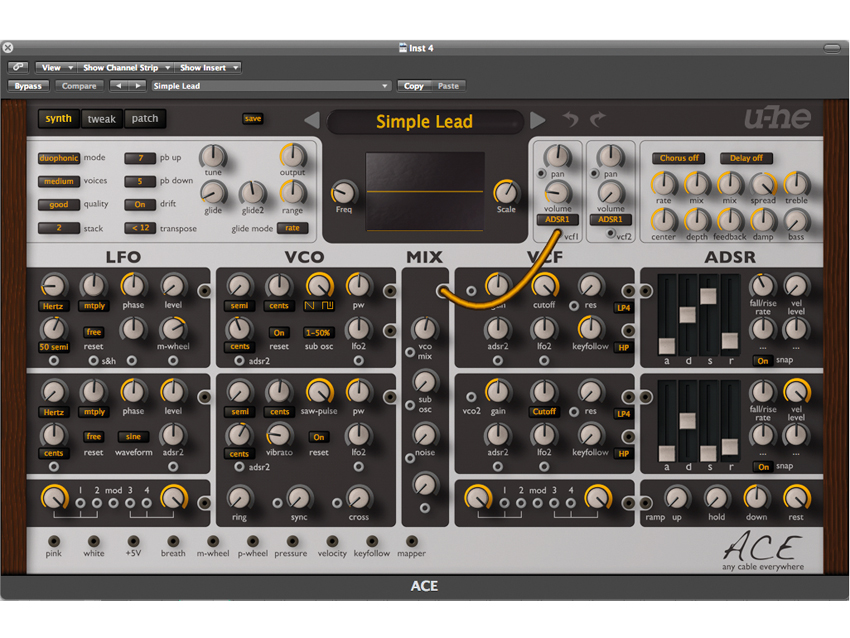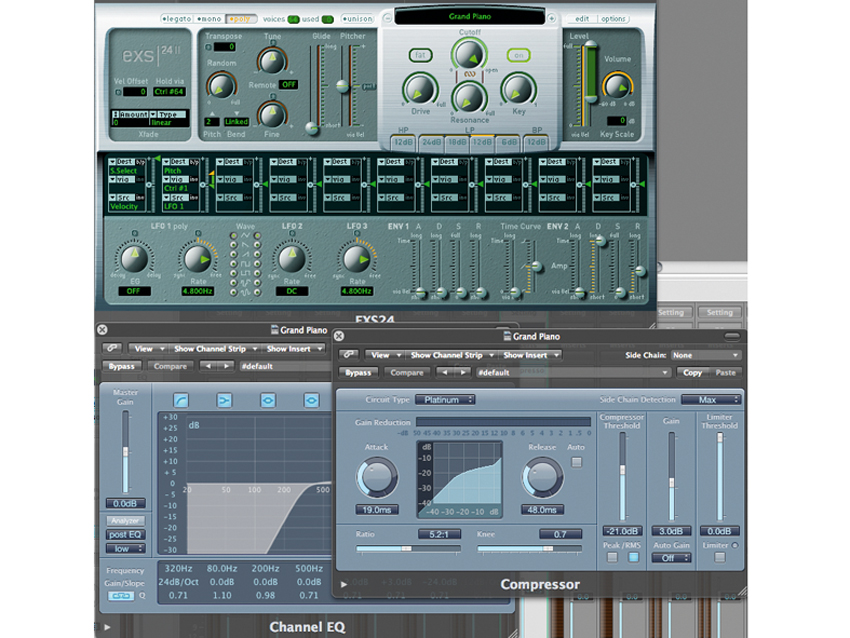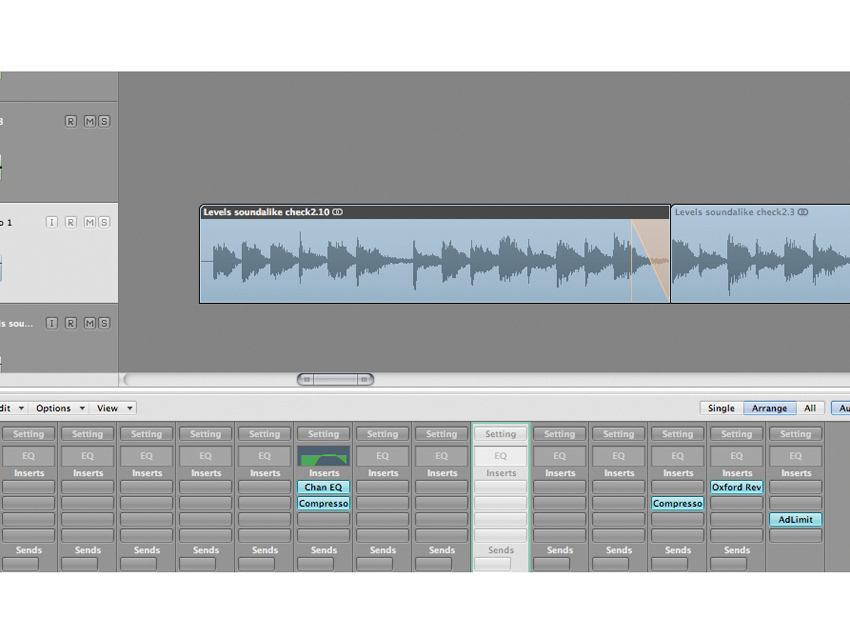Get the sound of Avicii's Levels
Hook-centric production tricks behind the chart leviathan

Intro
The lead in Avicii's club chart stormer is interesting as it features sidechain as well as a bright, plucked lead sound, which is supported by a warmer chord part.
Add in some grouped treatments, a little effects processing and some sound design and a simple part can become complex.Don't worry though, we've got a breakdown of how the sound could be recreated. Once you've tried this technique, think about how you could create something similar rather than just using the copied version!

Synth lead start
We start by loading a template single oscillator ‘Saw Tooth’ synth patch in Logic’s ES2. We add a second oscillator, also set to a sawtooth wave and set a 50/50 level split between the two.
We then tune them both down 1 octave and then detune the first down 8 cents and the second up by the same amount. We use Logic’s ‘Analog’ dial to bring in some ‘retro’ analogue synth tuning before setting the low-pass filter wide open and introducing a little resonance.
The Cutoff is also affected by Envelope 2 with a quick decay time. We adjust the amplifier envelope to a similar shape but introduce plenty of sustain so the sound lasts for as long as it’s played. We then duplicate this sound and copy the part to the duplicated instrument, tuning the copy up one octave to give a thick, rich sound.

Synth lead development
However, there’s plenty of square wave in the original sound too and for this, we set up u-he’s ACE synth, again, starting with a basic ‘PWM’ patch.
We switch off both LFO sections before detuning the two oscillators by the same amount applied within the ES2: +/- 8 cents. We route envelope 1 into the ‘Mix’ dial to provide envelope control over the sound and then set the cutoff frequency of the first filter to wide open to achieve a bright sound.
Again, we tweak the first envelope to provide a punchier Decay time and introduce Key Follow and Velocity Control over the filter to ensure that louder, higher notes are brighter. We then set up Sonnox’s Reverb on Auxiliary 1 and route all synth parts into it, tweaking the reverb’s tone to ensure it doesn’t become over-bright.

Synth Stabs and Piano
The second part of Levels comes from a stab synth part, for which we start with another sawtooth based synth part, this one playing polyphonically rather than as a mono synth.
We set up a new instrument beneath it and assign a piano sound to it, copying the stab synth part down to this second track.We use the filters within an EQ plug-in to dramatically reduce the amount of bass and treble in the piano sound before compressing it to produce a tighter sound.
This produces a ‘tacky’ piano which works well with the stabs and provides articulation. We then send all of the synth parts to an auxiliary buss so they can be grouped and remove the reverb sends from each sound. Instead we route the synth buss to the reverb buss so that all of the synth parts pick up the same amount of reverb from a single source.

Sidechain compression
Finally, we set up a drum loop playing a basic kick and snare pattern. We route this to a third auxiliary and switch off its output routing so it can’t be heard.
We then insert a compressor on the synth buss and set its sidechain source to the drum buss, so that the drum loop ‘ducks’ the compressor to provide a classic pumping sound. To create the pitch ramps, we bounce the resulting file to a stereo audio file and set this up on a new track.
We then chop the file up with cuts at the points we want the track to ‘restart’ normally. We then select the end sections of the previous regions and apply a real-time slow down of 350ms, which forces the pitch to ramp down before each restart. We insert a loudness Maximizer in the output channel to provide inflated volume.

Future Music is the number one magazine for today's producers. Packed with technique and technology we'll help you make great new music. All-access artist interviews, in-depth gear reviews, essential production tutorials and much more. Every marvellous monthly edition features reliable reviews of the latest and greatest hardware and software technology and techniques, unparalleled advice, in-depth interviews, sensational free samples and so much more to improve the experience and outcome of your music-making.









